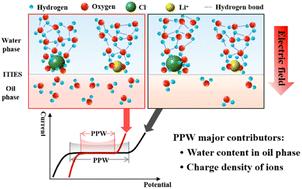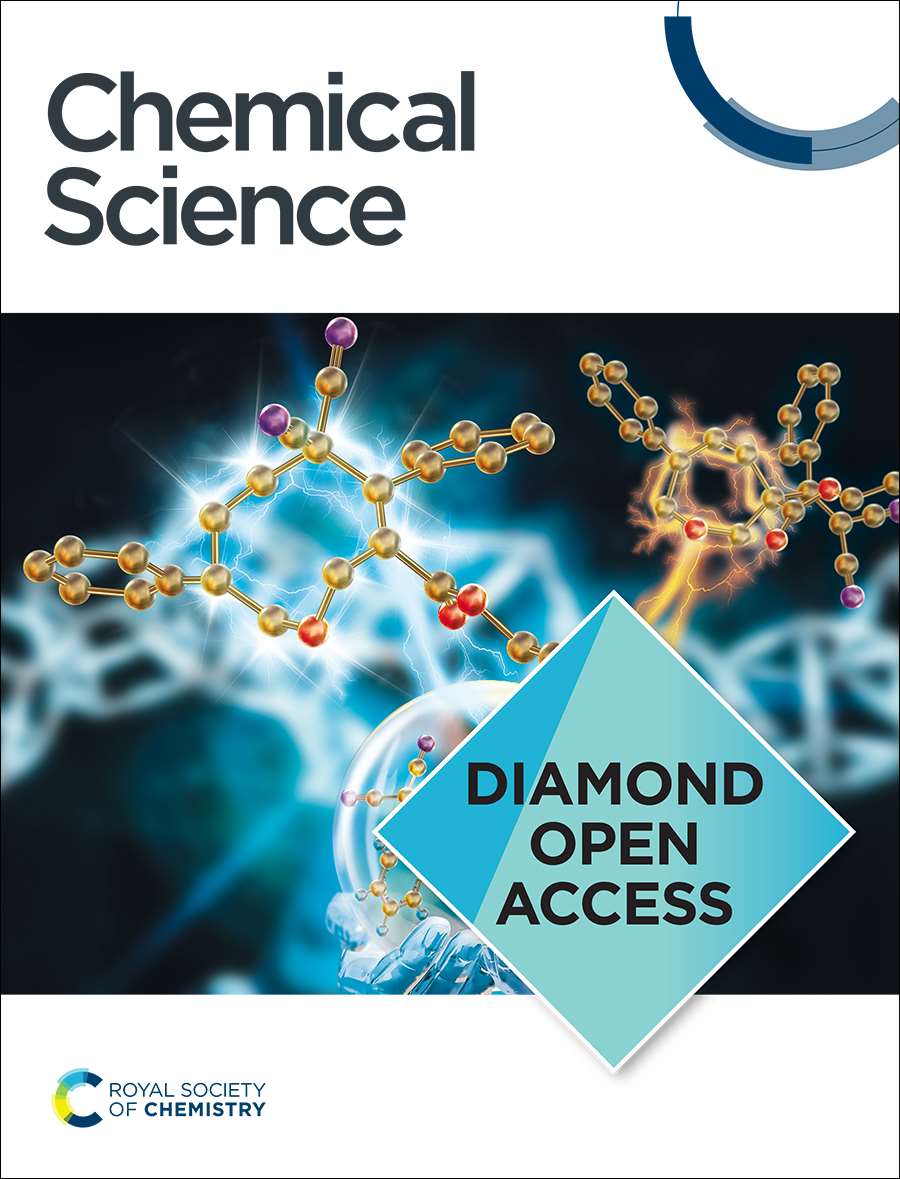Polarizable potential window at soft molecular interfaces as a quantitative descriptor for the water content in organic solvents
IF 7.6
1区 化学
Q1 CHEMISTRY, MULTIDISCIPLINARY
引用次数: 0
Abstract
The presence of water in organic solvents is a ubiquitous fact and can affect the reactivity and selectivity of chemical reactions. Traditional physical and chemical methods (IR, NMR, Karl Fischer titration, etc.) for quantitative measurement of water in organic solvents are not very suitable for rapid trace water analysis. Here, we demonstrate that, with hydrated Li+ and Cl− as probes to build polarizable potential windows (PPWs) at interfaces between water and more than twenty organic solvents, we can reflect the water content in organic solvents. This method only requires a scan of a cyclic voltammogram for Li+ and Cl− transfer (a weak-interaction electrochemical method), at a micro-scale polarized water/oil interface. A hybrid modified Born ionic solvation model was employed by us to compute the theoretical PPWs of LiCl at a series of water/oil interfaces, which match with the experimental results to some extent. Experiments and theories jointly confirm a novel and universal relationship: the PPW width correlates with the water content (in a large range) in organic solvents in a negative natural logarithm way. We postulate that when the organic solvent is different, the water fingers, i.e., ions dragging a string of water molecules, will search for water molecules in the organic phase with different probabilities (or microstate numbers) after crossing the interface. This determines the macroscopic quantities, namely the standard Gibbs free energy of ion transfer and the PPW width. It is envisioned that our work paves the way for a broad spectrum of applications.

求助全文
约1分钟内获得全文
求助全文
来源期刊

Chemical Science
CHEMISTRY, MULTIDISCIPLINARY-
CiteScore
14.40
自引率
4.80%
发文量
1352
审稿时长
2.1 months
期刊介绍:
Chemical Science is a journal that encompasses various disciplines within the chemical sciences. Its scope includes publishing ground-breaking research with significant implications for its respective field, as well as appealing to a wider audience in related areas. To be considered for publication, articles must showcase innovative and original advances in their field of study and be presented in a manner that is understandable to scientists from diverse backgrounds. However, the journal generally does not publish highly specialized research.
 求助内容:
求助内容: 应助结果提醒方式:
应助结果提醒方式:


